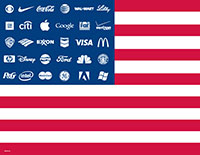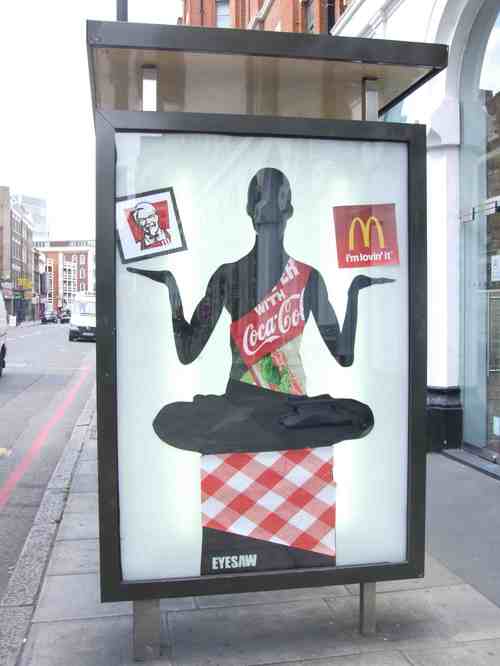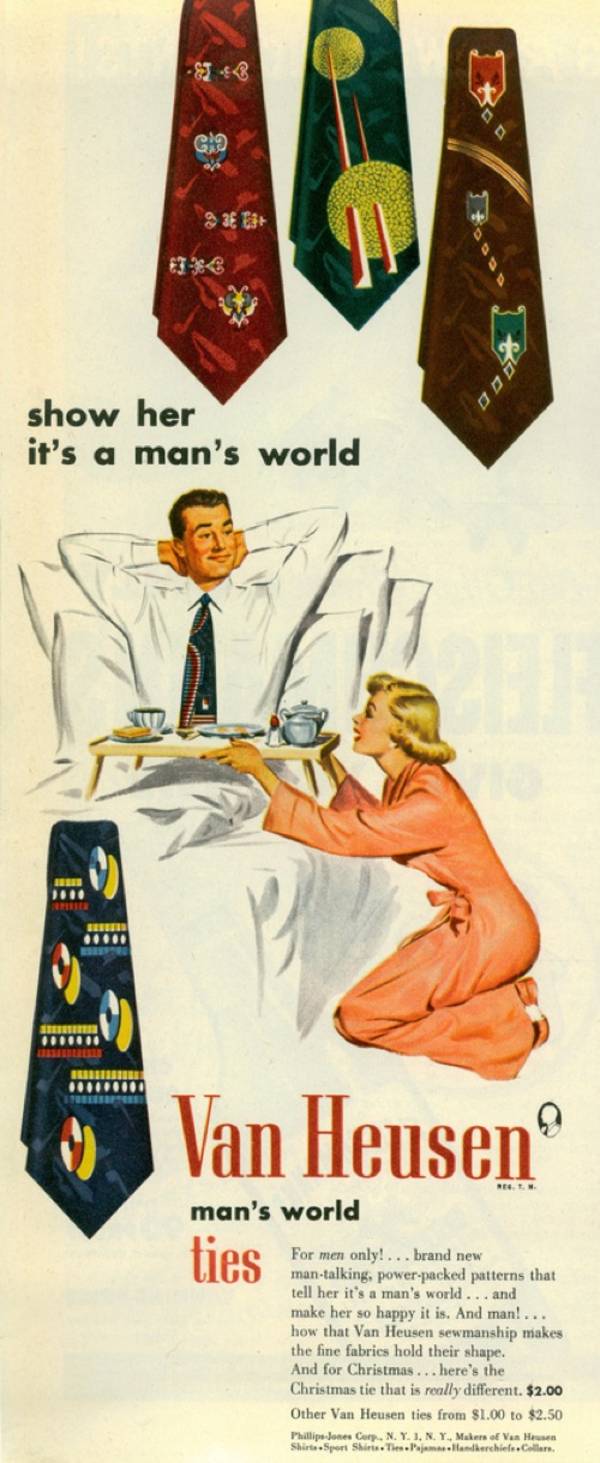Mickey Mauschwitz, the Reactionary Politics of Walt Disney
Along with FTR-304, this program might be entitled “The Politics of Illusion.” Few American cultural or artistic figures have come to be associated with wholesome, virtuous images as film maker and animation pioneer Walt Disney. In both cinema and television, Disney established himself as an American icon, and the merged corporation he left behind after his death is one of the giants of the media world. The reality behind Disney’s civic and political life is very different from the benevolent illusions projected onto big and small screens around the world.
In fact, Disney was one of the primary figures in the Holly wood blacklisting era and had a long professional association with fascist, anti-Semitic and organized crime elements.
1. This broadcast accesses information from a penetrating and insightful biography of Disney, which highlights the reactionary, vindictive political figure behind the benevolent facade he presented to his audiences. (Walt Disney: Hollywood’s Dark Prince; by Marc Eliot; Birch Lane Press; Copyright 1993 [HC]; ISBN 1–55972-174-X.)
2. Disney’s image as a paragon of wholesome, Christian, “family” values against the perceived world of immoral, sexual, “Jewish” Hollywood was established by the success of Mickey Mouse (originally known as “Steamboat Willie.”)
3. Eliot chronicles the rise of the Hollywood film industry as a reaction to the gangsterism of “the Trust,” the movie-making consortium established by seminal filmmaker Thomas Edison.
4. “Two of the enduringly popular myths of the history of American film are that Hollywood gave birth to the movies and that the industry’s pioneers were Jews who had immigrated from Europe. In truth, the American motion picture industry began on the East Coast as the exclusive dominion of the urban American turn-of-the century entrepreneurial elite . . . . Among these companies, the most powerful was the Wizard of Menlo Park, Thomas Alva Edison, the head of the studio that bore his name.
5. “For more than a decade Edison had been the unchallenged premier maker and distributor of mostly esoteric, non-narrative, silent motion picture ‘studies.’ Edison was greatly disturbed by the sudden, sweeping popularity of the new century’s first novelty, street-corner nickelodeons, amusement parlors that first appeared on New York’s Lower East Side. He felt they cheapened the sophisticated art of film by offering ‘peep show’ films and other lurid diversions meant to satisfy the carnal pleasure of the workingman.
6. “In 1910, Edison formed the first motion picture alliance, which came to be known as the ‘Trust.’ Its purpose was to protect the public (and his own financial interests) from the kind of immoral trash produced by what he termed the ‘Jewish profiteers,’ who not only ran the nickelodeons but made their own movies to show in them.
7. “The Trust was publicly dedicated to the preservation of the industry’s moral integrity and privately devoted to protecting Edison’s profitable monopoly. Not only were nickelodeon operators and filmmakers denied membership in the Trust, but they were prevented from buying raw film stock and projection equipment, all of which Edison held patents on and absolutely controlled.” (Ibid.; p. 49.)
8. Not content with suppressing economic competition with monopolistic market practices, Edison turned to gangsterism. “Edison, frustrated by his inability to wipe out his competition, resorted to hiring goon squads. They smashed the nickelodeon arcades and set block-long fires in the neighborhoods that housed them. All the while Edison justified his actions in the name of preserving the nation’s morals.” (Ibid.; p. 49.)
9. Ultimately, the strong-arm strategy of Edison & company precipitated the move by their competitors to California. “The mob tactics of the Trust caused the independents to put as much distance between themselves and Edison as possible. One by one they migrated west, until they reached California. There they found cheap real estate, a perfect climate, and the natural protection of a three-thousand-mile buffer zone. California gave them a second chance to make their movies. The films they made redefined the American motion picture and the industry that produced them. Unlike their early East Coast counterparts, the heads of Hollywood’s studios were less interested in artistic experimentation than profit. They put on the screen what sold the most. The public was willing to pay to see films filled with sex and violence, and Hollywood was more than happy to make them.” (Idem.)
10. The early dynamics of the film industry framed the political and cultural debate over the “morality” of the movie industry that survives to this day. The stigma that attached to Hollywood gave rise to close scrutiny of the industry in Washington. “By the early twenties, all that remained of Edison’s Trust was the issue it had raised regarding the moral content of motion pictures. The federal government kept a close watch on Hollywood, the new capital of the film industry, to make sure the movies it produced remained ‘socially acceptable’ films.
11. “They didn’t know if their movies were morel or immoral and couldn’t have cared less. To them, films were strictly vehicles of profit, not instruments of expression. The more money a film made, the better it was. As such, they ran their businesses like businesses and treated their writers, directors, actors, and scenery movers as clock-punching employees rather than artists. Whenever the industry came under attack for being morally corrupt, none of Hollywood’s owners believed the problem had anything to do with morality.
12. “Which, of course, was precisely the problem. Among those who correctly perceived Hollywood as dominated by Jews, to many in government and the private sector nothing more than heathens, unable to comprehend, let alone project, the essence of Christian morality.
13. “They believed Hollywood’s Jewish businessmen had corrupted an art form for the sake of making money, and by so doing had contributed to the widening moral corruption of America. They were, in Henry Ford’s words, a perfect example of America’s growing problem, its turn-of-the-century influx of ‘the international Jew.’” (Ibid.; pp. 49–50.) (For information about Henry Ford’s anti-Semitism and his role in funding Hitler and the German Nazi party in the 1920’s see Miscellaneous Archive Show M-11.)
14. With the onset of the Great Depression, scapegoating of the “immorality” of Hollywood for America’s perceived “moral decay” increased. “. . . the financial collapse of Wall Street brought renewed pressure on the government from the most powerful interests in the private sector to regulate the moral content of motion pictures. This latest attack on the moral vacuity of American movies and the men who made them was led once more by those looking for a link between the nation’s economic downturn and its moral one. And with each new attack, the nation’s Jewish-American studio heads felt the chill of anti-Semitism cool Hollywood’s balmy, and quite profitable, climate.” (Ibid.; pp. 50–51.)
15. Publishing magnate William Randolph Hearst led the charge against Hollywood, seeking to sell papers and stifle competition. (For discussion of the Hearst Press and its open editorial support for fascism, see RFA-1.) “In 1929, needing a ‘hot’ issue to boost his newspapers’ sagging circulations, William Randolph Hearst ran a series of editorials demanding the revival of federal censorship to regulate the growing immorality of motion pictures. No friend of either Jews or the film industry, he considered newsreels, shown in effect ‘free’ along with the features, a threat to his newspapers.
16. “Hearst’s campaign received much support in Congress, where the definition of movie morality had expanded through the years to include not only sexual provocation but political subversion. In March of 1929, U.S. Senator Smith Brookhart summed up what he considered the deteriorating situation in Hollywood as nothing more than a battle for profit at the cost of sexual and social morality between competing studios, led by ‘bunches of Jews.’” (Ibid. p. 51)
17. Enter Walt Disney and Mickey Mouse (nee Steamboat Willie), who were seen as the perfect, “Christian” antidote to the toxin of “amoral” Hollywood. “What Hollywood desperately needed was a new hero who not only extolled the right virtues but understood what they were in the first place. What Hollywood got, as if on cue, was Walt Disney’s Steamboat Willie, the perfect nonsexual, apolitical movie starring a harmless little talking mouse who courted his sweetheart by singing her a song. Overnight, every major studio in Hollywood that had for the better part of a decade turned out the kind of lurid, violent, sexually, suggestive fleshpot films guaranteed to put money in their banks, was now eager to align itself with not only the very popular, but now suddenly politically correct, filmmaker.” (Idem.)
18. Next, the program examines allegations of prewar Nazi activity on Disney’s part. As Eliot explains in his book, Disney was the son of a Christian evangelist and was very anti-labor in his business dealings. (This was typical of Hollywood studio chiefs at the time.) These attitudes combined with resentment of the power of many of the Jewish American studio heads. Perhaps because of these views, Disney apparently began attending American Nazi party meetings in the company of Gunther Lessing, Disney’s attorney and chief advisor on labor issues. “During the time Disney helped organize the independent filmmakers against the industry’s mainstream, he also was accompanying Lessing to American Nazi party meetings and rallies.
19. “According to [former Disney employee] Arthur Babbitt, ‘In the immediate years before we entered the war, there was a small but fiercely loyal, I suppose legal, following of the Nazi party. You could buy a copy of Mein Kampf on any newsstand in Hollywood. Nobody asked me to go to any meetings, but I did, out of curiosity. They were open meetings, anybody could attend, and I wanted to see what was going on for myself.
‘On more than one occasion I observed Walt Disney and Gunther Lessing there, along with a lot of other prominent Nazi-afflicted [sic] Hollywood personalities. Disney was going to meetings all the time. I was invited to the homes of several prominent actors and musicians, all of whom were actively working for the American Nazi party. I told a girlfriend of mine who was an editor at the time with Coronet magazine who encouraged me to write down what I observed. She had some connections to the FBI and turned in my reports.’
20. “If Disney and Lessing were sympathetic to the American Nazi movement, their interest was most likely motivated by the desire to regain favor with the once-lucrative, Nazi-occupied countries where Disney films were now banned. To that end Walt was also committed to the ‘America First’ movement and became one of Hollywood’s most active prewar isolationists. Under Lessing’s tutelage, Disney discovered how the passions and power of political activism could be used as weapons for personal gain. And later on, for revenge.” (Ibid.; pp. 120–121.)
21. In a footnote to the above passage Eliot adds, “In her memoirs, German filmmaker Leni Riefenstahl claims that after Kristallnacht she approached every studio in Hollywood looking for work. No studio head would even screen her movies except Walt Disney. He told her that he admired her work but if it became known that he was considering her, it would damage his reputation.” (Ibid.; p. 121.)
22. Well before the end of World War II, Disney was instrumental in bringing governmental investigators into his anti-Communist activities.
23. After initiating a California legislative investigation of Hollywood labor activist Herb Sorrell (a personal and professional enemy of Disney’s), Disney acted as vice-president of the Motion Picture Association to cause the House Un-American Activities Committee to upgrade its putative presence in Hollywood. “Disney was instrumental in pointing the organization [HUAC] in the direction of its first ‘Communist radical crackpot,’ Herb Sorrell. This wasn’t the first time Disney had gone after Sorrell. Early in 1942, after his success with the Cartoonists Guild, Sorrell had founded the Conference of Studio Unions. . .
“As far as Disney was concerned, the CSU was all part of the same Communist conspiracy that had struck his studio and continued to threaten all of Hollywood. As early as October 1941, barely a month after the studio strike ended, Disney had contacted Jack Tenney, chairman of the newly formed Joint Fact-Finding Committee on Un-American Activities of the California Legislature and urged him to go after the strikers. After turning over all the photos taken during the walkout, he urged Tenney to launch an investigation of ‘Reds in movies.’ Tenney took his cue from Disney and did just that. The first witness he called was Herb Sorrell.
24. “Although the Tenney committee was unable to prove a connection between Sorrell’s union activities and the Communist party, the hearings nevertheless chilled Hollywood’s liberal left, who saw the actions of the Tenney committee as a first dangerous step in the revival of the government’s belief that the entertainment industry was indeed an enclave of communism.” (Ibid.; p.172.)
25. As indicated previously, Disney played a pivotal role in helping to focus the attention of HUAC on the motion picture industry. “One of Disney’s first official duties as vice-president of the MPA was to send a letter to an arch-conservative U.S. Senator, Robert R. Reynolds (D-North Carolina), dated March 7, 1944, urging HUAC to intensify its presence in Hollywood. Walt wanted a fell congressional investigation regarding the infiltration of communism into the film community, for the ‘flagrant manner in which the motion picture industrialists of Hollywood have been coddling Communists and totalitarian-minded groups working in the industry for the dissemination of un-American ideas and beliefs.’ In a move reminiscent of the tactics of the anonymous antistrike Committee of 21, the only official identification that appeared on the letter was ‘A group of your friends.’”
26. “The immediate result of that letter was the arrival in Hollywood ten days later, of William Wheeler, a HUAC representative, to begin yet another investigation of Sorrell, his Conference of Studio Unions, and their possible link to the Communist party. The studios happily opened their doors to HUAC, and the committee took the opportunity to expand its investigation into every branch of the film industry’s working-class population that had sought affiliation with any union or guild during the past decade.”
27. “HUAC, with the full support of the FBI, this time subpoenaed everyone suspected of having any subversive, or merely suspicious affiliations in their background. Virtually no one with any evidence of liberal leanings escaped being summoned before the committee.” (Ibid.; p. 173.)
28. Disney worked with Roy Brewer, who became head of the IATSE (the mob-dominated International Association of Theatrical and Stage Employees). In that capacity, Brewer encouraged Disney to maintain a position of intransigence toward his cartoonists’ demands, so that the IATSE could co-opt their loyalty from the Cartoonists Guild. Eliot describes the close cooperation between Brewer, Disney and HUAC. “Privately, Roy Brewer, who had replaced Willie Bioff as the head of the Hollywood branch of IATSE, told Disney a new strike would give IATSE the opportunity to play hero by regaining the cartoonists’ lost jobs, and along with them their loyalty. “The first night after the layoffs, Disney met with representatives of the Guild and found them more amenable than he had expected or hoped. Sorrell, who believed Disney was trying to pull the Guild into another strike, was determined to reach a settlement. Sorrell settled for the rehiring of only 94 of the laid-off cartoonists and two weeks’ severance for the other 215. The remaining clerical and maintenance workers received nothing. Disney viewed these concessions as a total victory.
29. “Without losing a single day of production, Disney had won a significant reduction of his staff and payroll and severely weakened the Cartoonists Guild’s ability to dictate studio policy. Walt then promised Brewer complete cooperation in helping to rid the industry permanently of Sorrell and his fellow insurgents.
30. “That opportunity came in November 1947, with the commencement of HUAC’s next series of investigations into the entertainment industry. Now under the chairmanship of J. Parnell Thomas, a notoriously anti-labor congressman, HUAC received the warm endorsement of IATSE, the American Legion, and the Catholic Church and the full cooperation of Hollywood’s studios. A group of left-wing writers, which came to be known as the ‘Hollywood Ten,’ symbolized the relentlessly persecutory actions of Thomas’s investigation. The Ten were deemed ‘unfriendly’ witnesses after each cited his right under the First Amendment to refuse to respond to the most famous question of the era: Are you now, or have you ever been, a member of the Communist party? All ten were immediately blacklisted, their careers shattered, and their lives disrupted by jail sentences for contempt.
31. “HUAC’s investigation, the head of the Hollywood branch of IATSE sent letters to every major industry figure, on-screen talent and off-, warming that if they didn’t now declare their open support for IATSE, they would be considered enemies of the Hollywood establishment. He warned that failure to support IATSE would make them subject not only to industry boycott, that is, inclusion on the blacklist, but investigation by Thomas’s HUAC.” (Ibid. pp. 188–189)
32. Eliot writes that, eventually, many Hollywood labor leaders went with the political tides that were flowing through the country, and that Disney had begun an active collaboration as an FBI informant. “By May 1947, the mere receipt of a HUAC subpoena implied Communist affiliation, and investigation by the FBI’s ‘compic’ (Communist pictures) team of Hollywood-based informers, in which Walt was by now an active participant. Among the first to capitulate to the specter of HUAC and Brewer’s blacklist were the leaders of the Screen Actors Guild, onetime liberal Roosevelt supporter Ronald Reagan and song-and-dance-man George Murphy, who hastily convinced their membership to reject Sorrell and the CSU in favor of IATSE.” (Ibid.; p. 191.)
33. Eventually, Reagan and Brewer were to team up again, after Reagan became President. “According to Dan Moldea, in Dark Victory, pp. 65–69,
332: ‘Instead of trying to rid the union of its gangster image and all remnants of mob control, Brewer was obsessed with eliminating the ‘Communist Influence’ within the union and the movie industry in general. ‘When Browne [and Bioff] went to jail,’ Brewer insisted, ‘that ended any connection with the mob in IATSE . . . the truth is, [the Communists] had this town in the palm of their hands, and they were calling the shots.’ Brewer was appointed by President Reagan in 1984 as chairman of the Federal Service Impasse Panel, which arbitrated disputes between federal agencies and the unions representing federal workers.’” (Ibid.; p. 188.)
34. During the course of the HUAC hearings, Disney’s personal testimony lent considerable momentum to the proceedings. “Disney’s testimony helped strengthen Brewer’s industry-wide blacklist. The mere whisper of a name was enough to eliminate someone from consideration for a job. Because no proof was required, nor any defense short of confession acceptable, the assumption of guilt until proven innocent replaced the constitutional rights of everyone accused, and plunged America into one of its darkest political periods.” (Ibid.; p. 196.)
35. Eliot chronicles the destruction that the blacklist brought to the professional lives of those affected. One of the most famous film personalities to fall victim to the anti-Communist witch hunts was Charlie Chaplin.
36. “Of those most directly affected by the blacklist, some, like the Hollywood Ten, served time in federal prison on contempt charges. Others, including actor John Garfield, died prematurely. Like Sorrell, Garfield suffered a fatal heart attack while still in his late thirties. Still others, like veteran actor Philip Loeb, grew despondent and, their professional lives shattered, committed suicide.
“And still others, like Charlie Chaplin, were literally exiled. Long a thorn in the side of conservative Hollywood, Chaplin had been immune to the powers of the industry because he himself was one. After amassing a fortune for his work in silent films and his participation in forming United Artists, he began his own studio.
“Throughout the thirties, up to and including The Great Dictator, he made highly entertaining movies infused with populism. His active campaign for a second front against the Axis powers during World War II and his pleas for the curtailment of anticommunist propaganda angered Disney, who had once so idolized Chaplin.
“Chaplin’s actions also angered HUAC. After three postponements of his subpoenaed testimony he sent HUAC a telegram in which he stated that ‘I am not a Communist; neither have I ever joined a political party or organization in my life.’ Although HUAC was apparently satisfied by his response and wrote back that his appearance was no longer necessary, the matter was far from closed. Chaplin, who was British, had never applied for U.S. citizenship. In 1952, at the height of the blacklist era, while Chaplin was on a six-month tout of England and Europe, the Immigration and Naturalization Service barred his return to the United States under a code denying an alien entry on grounds of morals or Communist affiliation. Chaplin vowed never to set foot in America again and blocked stateside showings of most of his feature films.
37. “Thus ended the Hollywood career of perhaps the greatest single talent the world of film had ever produced. Although Walt declined to comment publicly on the matter of Chaplin’s exile, in private he told one of his ‘Nine Old Men’ studio loyalists that the country was better off without ‘the little Commie.’” (Ibid.; pp. 196–197.)
38. Eventually, Disney was promoted by the FBI to the position of Special Agent in Charge contact, which enhanced his political power against his professional associates. The bureau’s was seeking an insider to provide them with information about the nascent television industry, and felt that Disney (a trusted operative in the past) would fill the bill.
39. “Next to that report was a letter he had received from J. Edgar Hoover, the contents of which meant as much to him as the financial report. In his letter Hoover informed Walt he had been officially promoted to the position of Special Agent in Charge contact.
40. “Here is the confidential 1954 FBI inter-office memo that describes the promotion: ‘Mr. Walt Disney is the Vice-President in charge of production and the founder of Walt Disney Productions, Inc., 2400 West Alameda Street, Burbank, California. Mr. Disney is extremely prominent in the motion picture industry and his company is the foremost organization in the production of cartoons.’ Mr. Disney has recently established a business association with the American Broadcasting Company . . . for the production of a series of television show, which for the most part are scheduled to be filmed at Disneyland, a multimillion dollar amusement park being established under Mr. Disney’s direction in the vicinity of Anaheim, California. Mr. Disney has volunteered representatives of this office complete access to the facilities of Disneyland for use in connection with official matters and for recreational purposes. . . .
‘Because of Mr. Disney’s position as the foremost producer of cartoon films in the motion picture industry and his prominence and wide acquaintanceship in film production matters, it is believed that he can be of valuable assistance to this office and therefore it is my recommendation that he be approved as a Special Agent in Charge (SAC) contact.’
41. “Being made an official SAC contact pleased Walt greatly, because it meant that in addition to continuing to supply his data to the bureau, other informants could now supply reports to him. It was Hoover’s Christmas present to Walt, the timing of which was no accident. Hoover, as he implied in his directive, wanted to capitalize on Disney’s involvement with network television. The FBI had thus far been unable to penetrate the middle echelon of the new medium’s power loop. What the Bureau wanted was someone it could trust on the inside. As far as J. Edgar Hoover was concerned, the man most qualified for that assignment was the Bureau’s proven Hollywood veteran, the man everyone, including the head of the FBI, called ‘Uncle Walt.’” (Ibid.; pp. 224–225.)
42. Eventually, Disney himself came under suspicion, ironically enough, as the result of his having attended a memorial service on whose guests he reported to the FBI. “That same year, 1956, Disney’s relationship with the FBI took an unexpected turn. It was a bizarre episode that demonstrated the spreading infection of political paranoia. The FBI had begun to question the allegiance, patriotism, and loyalty of one of its own, most revered, and presumably immune operatives.
‘The trouble began early in the year, in January, when Disney sent producer Jerry Sims to Washington to finalize plans with the Bureau for a two-minute ‘Mickey Mouse Club’ newsreel of a group of children touring the Bureau’s D.C. headquarters. Sims submitted a preliminary script to an FBI agent identified as Kemper, who dutifully passed it on to Lou Nichols, the Bureau’s head of public relations. Nichols reviewed the material and initially approved the venture. However a week later he apparently changed his mind when he returned Kemper’s report with a message scrawled in ink across the bottom that read “i don’t think we should.” Kemper then called Sims and told him the bureau would be unable to assist on the project.
“When Walt received news of the FBI’s turndown he phoned Hoover to find out why. Hoover told Disney he would personally look into the situation and ask his close friend Clyde Tolson, the Bureau’s assistant director and second to command, to investigate the matter. Tolson ordered a complete review of what had now become in FBI headquarters as the ‘Disney Situation,’ after which he reaffirmed Nichols’s decision not to cooperate with Disney.” (Ibid.; pp.238–239.)
43. “The unsigned memo was probably requested by Hoover. Incredibly, some mid-level bureaucrat, unaware of Disney’s status within the FBI, had turned up what he believed was information that linked Walt Disney to subversive Communist organizations and activities in the early forties. Even more astonishing, of the two ‘incidents’ cited, the first, the ‘Council for Pan-American Democracy’ had been attended by Disney as an undercover spy for the FBI, either by his own initiative or at the Bureau’s directive, after which he supplied a detailed report to his Los Angeles SAC. As for the ‘tribute’ to Art Young, Disney had never made a secret of his admiration for the renowned artist’s work, and upon Young’s untimely death in an automobile accident, Walt attended a public memorial, made a small donation to a memorial fund for Young’s family, and filed a complete report about who else attended the tribute to his SAC. Somehow, the FBI had construed from these two incidents that Walt’s political loyalties were questionable. They did so in spite of his official SAC status and long history of informing, his anticommunist activities, his government contracts, his involvement with the Hollywood Alliance, his friendly testimony before HUAC (which he had been instrumental In bringing to Hollywood), and his active support of the blacklist.”
44. “When Hoover finally read the memo, he was aghast and immediately approved the ‘Mickey Mouse Club’ segment.” (Ibid.; p. 241.)
http://spitfirelist.com/for-the-record/ ... lt-disney/






















